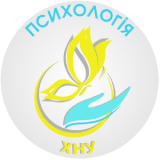МЕТОДИ ОЦІНКИ ТА ТЕРАПЕВТИЧНІ СТРАТЕГІЇ ВЕДЕННЯ ПАЦІЄНТІВ ІЗ КОМОРБІДНІСТЮ МІННО-ВИБУХОВИХ ТРАВМ ТА ПОСТТРАВМАТИЧНОГО СТРЕСОВОГО РОЗЛАДУ
DOI:
https://doi.org/10.31891/PT-2025-3-12Ключові слова:
мінно-вибухова травма, посттравматичний стресовий розлад, діагностика, психометричні інструменти, МРТ, біомаркери, реабілітація, мультидисциплінарний підхідАнотація
У статті розглядаються сучасні підходи до діагностики та лікування пацієнтів із поєднанням мінно-вибухової травми (МВТ) та посттравматичного стресового розладу (ПТСР). Окреслено труднощі диференційної діагностики цих станів через перехрест симптомів. Проаналізовано клінічні методи (CAPS-5, HADS), психометричні шкали (CD-RISC, SF-36), інструментальні дослідження (МРТ, fMRI, ЕЕГ) та біомаркери (IL-6, TNF-α, S100B). Особливу увагу приділено класичним і сучасним стратегіям ментальної реабілітації, зокрема когнітивно-поведінковій терапії, EMDR, VR-технологіям і нейрофідбеку. Наголошено на важливості мультидисциплінарного підходу для комплексного відновлення військовослужбовців.
##submission.downloads##
Опубліковано
25.09.2025
Як цитувати
ДАНИЛЕНКО, Т. (2025). МЕТОДИ ОЦІНКИ ТА ТЕРАПЕВТИЧНІ СТРАТЕГІЇ ВЕДЕННЯ ПАЦІЄНТІВ ІЗ КОМОРБІДНІСТЮ МІННО-ВИБУХОВИХ ТРАВМ ТА ПОСТТРАВМАТИЧНОГО СТРЕСОВОГО РОЗЛАДУ. Psychology Travelogs, (3), 131–140. https://doi.org/10.31891/PT-2025-3-12
Номер
Розділ
Статті







